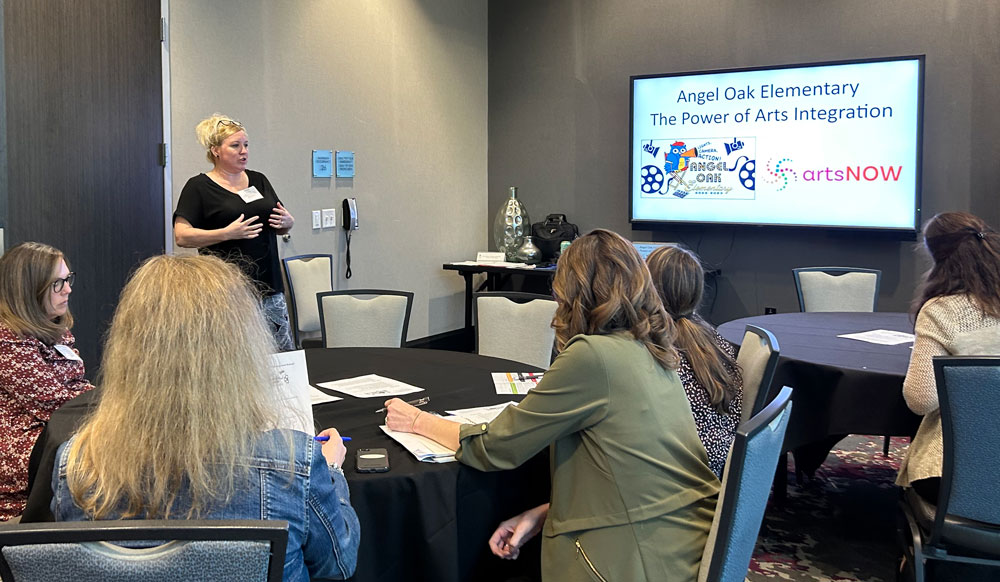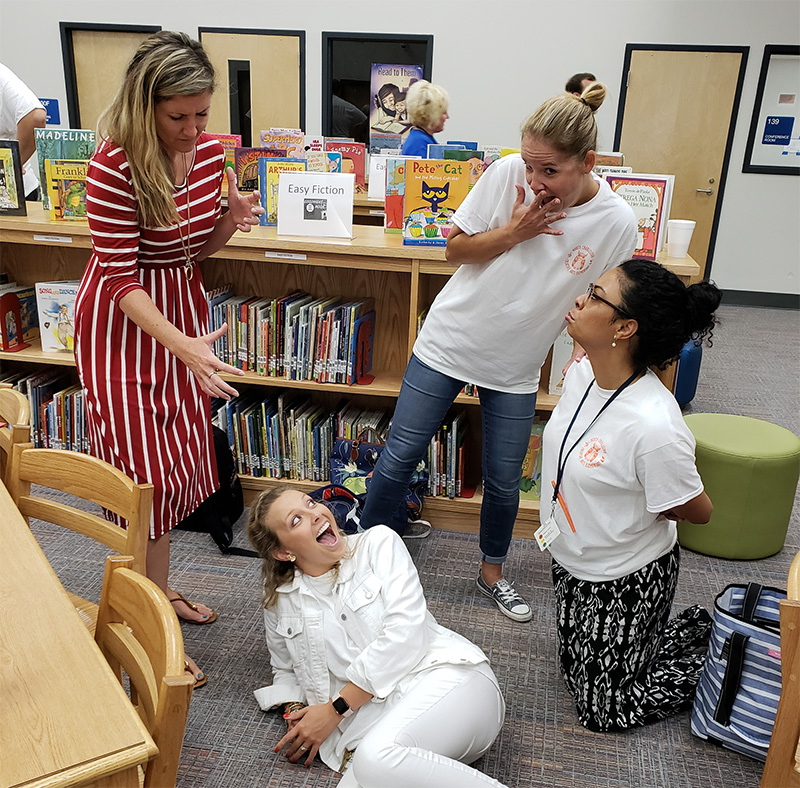Why Establishing Stakeholder Support and Continuous Involvement is Important to Engage Students, Teachers, Families, Community and Arts Partners
Like I noted in my last post, anyone who enters an arts-integrated school can feel the magic! You see students light up as they move, act and express their learning in creative ways. Teachers speak confidently about their craft and are excited to implement new strategies. The school's energy just feels different! When implemented with fidelity, arts integration is a game-changer when it comes to increasing student engagement, making connections between content and changing the entire climate and culture of a school. The magic, however, does not happen overnight. So, you may wonder, how does a school systematically work to build a successful arts integrated model? I will share the first leg of the journey with you. You must establish stakeholder support and continuous involvement of several audiences. You need to engage students, teachers, families, community and arts partners in order to achieve your goals.
No great change in a school can occur without stakeholder input and buy-in. Period. Read that again at least 5 more times. Got it? Good:)
So, let's look at our key groups of stakeholder audiences a little more closely...
Students: Have you ever really taken the time to ask students what THEY want and how THEY like to learn? Whether through a survey or just by holding an open discussion, students (yes, even primary and elementary) will tell you! From our experience, students will tell you that they love to explore, play, move, get "messy," collaborate with friends and express themselves in a variety of ways. They also love it when learning is exciting! As a 5th grade student recently stated in an interview during our ArtsNOW SmART Literacy grant, arts integration helps "whatever you are going over to stick into your brain a little better and also for other peers as well. A demonstration always helps you get a better perspective on what you are learning about." When schools begin implementing arts integration in the classroom, many will be surprised by how naturally the strategies align to how children want and need to learn. They love it! Ask your students what they want.
Teachers: Teachers are subjected to so many expectations and changes each year. Just when they get used to one curriculum or initiative, it changes, and they are forced to move on to the next. Their "full plates" and this constant "revolving door" leaves many feeling frustrated. So how do schools get buy-in from a group that may already feel jaded? You listen first. Almost all teachers will tell you that they want a thriving classroom full of excited students ready to learn. They will tell you that worksheets and other traditional ways of learning don't always cut it to help a student obtain mastery of a standard or objective. They want to use engaging strategies that stand the test of time and that they can easily mesh with whatever new initiatives may come down the pipe. Then, you show them why arts integration is a perfect solution! They need to see it in action, and they need to experience success of implementation with their OWN students. A well-designed professional learning plan will help teachers gain strategies slowly and strategically to buy-in. They will also need to get "comfortable with being uncomfortable" as adults implementing these strategies. Once they see the student impact of arts integration, their confidence in the model increases.
Families: All parents and families want their children to have a quality educational experience every day. When they ask their child, "What did you do today at school?", they want to hear their child spill over with knowledge and excitement about what they have learned. They also want to be assured that any school-based model adopted promotes high levels of rigor, challenges their child's thinking and doesn't "water down" core content that their child is expected to master. Again, listening and taking the time to build parent and family confidence is key. Sharing quantitative and qualitative data and research on the benefits of arts integration with all parents (and explicitly with key groups like school improvement councils and PTAs) sets this foundation. Then you start to include them in family arts events, projects, activities and more. If you do this with fidelity, they will become your greatest supporters and cheerleaders!
Community and Arts Partners: I have never reached out to a community arts group, organization or local business who did not want to be involved in partnering with our school in one way or another. "It takes an ARTS village" is a great way to describe it! Using the strengths and talents of the local community is vital to creating a successful arts integrated school. Begin to implement artists residencies, host or attend performances and work with your arts community to support mutually beneficial goals. These groups offer opportunities for students to experience the power of arts through real world opportunities. Watch a child's face as they hear a symphony for the first time, attend a play in a local theater, work with a local artist on a mural project or dance with the ballet...nothing can describe it...other than, maybe, that word I keep going back to...MAGIC. Share your story as you build these relationships and watch how it just keeps expanding. Often, these partnerships can evolve into grants from foundations and other charitable donors.
Once you establish stakeholder support from the groups above, you have to make sure it continuously evolves. Always keep asking what suggestions they have or new ideas they may want to implement to support the model. Survey these groups and have open discussions to monitor their perceptions on "how it's going" and "what needs to change." Never take their involvement and input for granted!
Judith Condon, Principal, Angel Oak Elementary School Johns Island, SC




